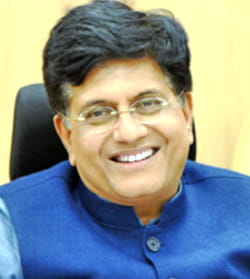Food Security & Farmer Welfare-A Modi Guarantee

Piyush Goyal
At a time when global food supply is stressed by the market’s vulnerability to war, weather and volatility, the situation in India is conspicuously comfortable – both for consumers and farmers.
On Thursday, PM Modi-led cabinet raised the Fair and Remunerative Price of sugarcane by 8%, for the benefit of farmers, who are already getting the highest cane price in the world, while the government is ensuring that Indian consumers get the cheapest sugar in the world.
There is a series of such initiatives that combine farmer welfare with consumer interest. Earlier this month, PM Modi once again ensured the supply of grains for our citizens at affordable prices with the launch of “Bharat Rice” at Rs 29 per kg, carrying forward his mission to provide nutritious food to every citizen.
Thanks to our hard-working farmers, who are making the country atmanirbhar with more than adequate production of most farm commodities, the government is providing free foodgrains to over 80 crore people under the Pradhan Mantri Garib Kalyan Anna Yojana (PMGKAY), and very reasonably priced food products for the rest of the population.
Bharat Rice, Atta, Daal – The Modi government has always acted swiftly to counter any abnormal rise prices of sensitive food commodities. Last year, it launched “Bharat Dal” at the highly subsidized rate of Rs 60 per kg, and “Bharat Atta” at the low price of Rs 27.50 per kg. Similarly, Central agencies sell affordable onions. It even supplied tomatoes when prices were soaring, with Central government picking up a large bill for the differential. The sale of “Bharat” food items has been quickly scaled up and is available at more than 18,000 outlets.
Unprecedented, swift – Never before has the Central government sold foodgrains or pulses in the retail market. PM Modi always responds decisively to control prices. Last year, as soon as unseasonal rains disrupted the supply of tomatoes, the government swung into action and reversed the rise in prices. PM Modi has ensured that good-quality daal, rice and atta are supplied at moderate rates. These measures are implemented without discrimination, to help every section of society.
Another unprecedented action of this government is to have a dedicated Price Stabilisation Fund to create a buffer of agri-horticultural commodities for prompt market intervention. The government took the landmark initiative to ensure availability and affordability of major pulses and onion with a cumulativebudgetary support of Rs. 27,489 crore.
The government has given a strong message that any attempt to hoard supplies or to manipulate the market will backfire. While a record wheat harvest is expected in a few months, the government is not taking any chances. It has imposed stock limits on wheat and is ready to increase supply in the market.
Every day, retail and wholesale prices of 22 essential food commodities are monitored. With inputs from 550 price-monitoring centres in 34 states/UTs, price trends are analysed for taking appropriate decisions for release of stocks from the buffer to cool down prices, and imposition of stock limits to prevent hoarding.
Affordable sugar, happy farmer -The ex-mill price of sugar has fallen 3.5-4% after the start of the new cane-crushing season, while ensuring that farmers are earning well and paid on time. The ethanol-blending programme has boosted the viability of the industry had helped millers clear about 99.5% sugarcane dues in 2022-23. This is the lowest-ever pendency of dues, demonstrating PM Modi’s focus on farmer welfare.
Cooking oil prices in India are at a two-year low following proactive steps including changes in import duties. In the past year, retail prices of mustard oil are down 18.3%, Soyabean oil 17.1%, Sunflower oil 23.8% and RBD Palmolien 12%. The government is also taking effective steps to control wheat prices. The all-India average prices of wheat and atta in the retail and wholesale markets are showing a declining trend.
Indians First – Thegovernment has restricted exports of wheat, rice and sugar to ensure adequate domestic supply and moderate prices, while making sure that farmers get remunerative prices. It has stepped up sales of rice and wheat under the Open Market Sales Scheme to increase domestic supply. The launch of “Bharat Rice”, which follows the series of other measures will go a long way in moderating rice prices.
Free Food in PM’s third term – The free-food scheme had helped Indians withstand the ravaging pandemic that choked the global economy. The pandemic is behind us, but the PM’s compassionate leadership, and consequently the generous welfare scheme, continue. The government has already committed a staggering Rs 11.80 lakh crore in the next five years under the PMGKAY, in PM Modi’s third term in office. This scheme carries forward the PM’s impeccable record of running generous welfare schemes without compromising on fiscal discipline. Similarly, this government ensures ethics and discipline in the market for essential food commodities.
Best decade for prices – As a result, the past decade has been India’s best in inflation control, despite the twin shocks of the pandemic and the Ukraine crisis which made it very challenging. This has been achieved despite the fact that we inherited from the UPA a “Fragile-5” economy that was dogged by rampant corruption, scant regard for the poor, and double-digit inflation. India’s best performance in food security and inflation control came when the country faced the most challenging external environment. It only reinforces the conviction of 140 crore Indians that Modi hai to mumkinhai.
(The writer is Union Minister for Commerce & Industry, Consumer Affairs, Food and Public Distribution and Textiles).
